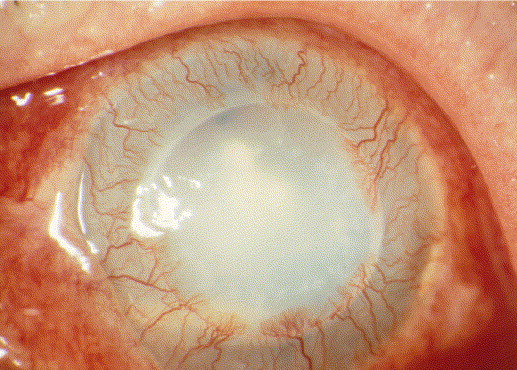Providencia septicemia, a rare but serious bloodstream infection, is increasingly reported among hospitalized patients, particularly those with indwelling devices or immunocompromised status. This condition, most commonly caused by Providencia stuartii and Providencia rettgeri, presents a growing clinical concern due to its inherent multidrug resistance and high morbidity in vulnerable populations. In this article, we examine the pathogenesis, clinical features, diagnostic approaches, and evidence-based treatment of Providencia septicemia.

Introduction to Providencia Species and Their Clinical Relevance
Microbiological Profile
Providencia is a genus of Gram-negative, facultatively anaerobic bacilli belonging to the Enterobacteriaceae family. The two most pathogenic species are:
- Providencia stuartii
- Providencia rettgeri
These organisms are urease-positive, non-lactose fermenters, and often exhibit resistance to multiple antibiotics, making them formidable in nosocomial settings.
Epidemiology
Providencia septicemia typically occurs in:
- Elderly patients in long-term care facilities
- Individuals with chronic indwelling devices (e.g., urinary catheters, central lines)
- Immunocompromised hosts
- Patients with underlying urologic conditions or recent surgery
Pathophysiology of Providencia-Induced Septicemia
Routes of Entry
- Urinary tract infections (UTIs) progressing to bacteremia
- Wound infections in hospitalized patients
- Contaminated intravenous devices serving as portals of entry
The transition from localized infection to systemic involvement is often rapid, especially in individuals with weakened immune defenses.
Clinical Manifestations of Providencia Septicemia
Systemic Signs
- Fever and rigors
- Tachycardia
- Hypotension
- Altered mental status in elderly patients
- Leukocytosis or leukopenia
Organ-Specific Complications
- Acute kidney injury
- Respiratory distress
- Disseminated intravascular coagulation (DIC)
- Septic shock if untreated
Patients often present late due to nonspecific symptoms, making early suspicion and intervention critical.
Diagnostic Evaluation
Blood Cultures
- Gold standard for diagnosis
- Should be collected from multiple sites prior to antibiotic administration
Urine and Wound Cultures
- Useful for identifying potential sources of bacteremia
- May reveal matching Providencia species as in blood cultures
Laboratory Markers
- Elevated procalcitonin and C-reactive protein (CRP)
- Complete blood count often shows neutrophilia
- Blood chemistry may indicate multiorgan dysfunction
Imaging
- Ultrasound or CT if deep abscess or urinary obstruction is suspected
Antimicrobial Resistance in Providencia Bacteremia
Resistance Mechanisms
Providencia species often harbor:
- Extended-spectrum beta-lactamases (ESBLs)
- Metallo-beta-lactamases (e.g., NDM-1) causing carbapenem resistance
- Efflux pumps and porin mutations contributing to fluoroquinolone and aminoglycoside resistance
Typical Resistance Profile
| Antibiotic Class | Resistance Level |
|---|---|
| Beta-lactams | High |
| Cephalosporins | High |
| Carbapenems | Moderate–High |
| Aminoglycosides | Variable |
| Fluoroquinolones | Moderate |
| Colistin | Often effective |
| Fosfomycin | Variable |
Therapeutic Management of Providencia Septicemia
Empiric Antibiotic Therapy
Initial therapy must cover multidrug-resistant Gram-negative organisms:
- Meropenem or imipenem in settings with carbapenem-susceptible strains
- Ceftazidime-avibactam or tigecycline for ESBL or carbapenemase producers
- Colistin may be considered in extreme multidrug-resistant infections
Tailored Therapy
- Adjusted based on culture sensitivity
- Duration typically ranges from 10–14 days, depending on source control and patient response
Source Control
- Removal or replacement of infected catheters
- Drainage of abscesses or debridement of infected tissue
- Urologic intervention for obstructive uropathy
Prognosis and Complications
Prognostic Indicators
- Delay in effective antibiotic therapy
- Presence of septic shock
- Age >65 years
- Chronic comorbid conditions (e.g., diabetes, CKD)
Potential Complications
- Septic shock with multiorgan failure
- Endocarditis (rare but possible in device-related infections)
- Chronic bacteremia with relapsing fever
Preventive Measures in Healthcare Settings
Infection Control
- Strict hand hygiene protocols
- Proper catheter and IV line management
- Regular audits and staff training on infection prevention
Antimicrobial Stewardship
- Judicious use of broad-spectrum antibiotics
- De-escalation based on culture results
- Avoidance of prolonged antibiotic courses unless clinically indicated
Patient Monitoring
- Routine screening of at-risk patients
- Prompt investigation of unexplained fevers in catheterized or hospitalized individuals
Providencia septicemia is a life-threatening condition often arising from healthcare-associated infections in immunocompromised or catheterized individuals. Due to its high level of antimicrobial resistance, timely diagnosis, culture-based therapy, and rigorous infection control are vital for favorable outcomes. With the growing threat of multidrug-resistant organisms, awareness and early intervention remain our strongest defenses against Providencia bloodstream infections.